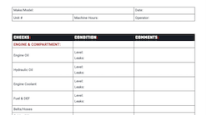Truck Dealers Talk Challenges in Service, Uptime

This story appears in the Jan. 23 print edition of Equipment & Maintenance Update, a supplement to Transport Topics.
While it’s no secret trucking fleets have been frustrated in recent years when it comes to getting problems with their rigs diagnosed and repaired in a timely manner, truck dealers say they are working harder than ever to improve service and uptime for their customers. But, they say, fleets need to step up to the plate as well.
“Trucks have become far more complex with all of the electronics and emission controls that we’ve been experiencing these last few years, and it’s put a real burden on the dealer network,” said Steven Parker, chairman of American Truck Dealers and president of Baltimore Potomac Truck Centers, a Mack and Volvo dealer.
He’s echoed by Michael McRoberts, senior vice president and chief operating officer of the San Antonio mega-dealership Rush Enterprises, which sells Peterbilt and International brand trucks. “Vertical engine integration, increased engine electronic complexity and a technician shortage have all contributed to fleets outsourcing more of their service requirements, causing demand to exceed the labor supply,” he said.
Rush, like many other dealers, has invested heavily in recent years to improve facilities so they can increase not only the number of trucks they work on but also how quickly repairs are made. “The newer, upgraded facilities help us improve both our capacity and our efficiency, while they also work to support us in recruiting and retaining talented technicians,” McRoberts said.
But facilities aren’t enough. Parker believes the pressures dealers face from fleets are continuing to escalate, but he said the solution many dealers are employing is to have a much closer working relationship with their customers.
One way some dealers are doing this is by setting up their own co-operatives with other dealerships. Kyle Treadway, dealer principal at Salt Lake City-based Kenworth Sales Co., said he and about a dozen others created a “concierge program.” They register specific customers for red carpet treatment when they come into any of his 21 locations as well as those of other dealers, allowing them to cover an area from California to as far away as North Carolina and Florida.
“It carries a guarantee of an assessment of the service issue within two hours of arrival and communication with the customer through the course of the repair,” he said. This communication is by phone, e-mail, texting or whatever the customer prefers. And while this program doesn’t guarantee when a truck will be repaired, it keeps customers informed.
Treadway said one of the reasons for implementing such a program was fleets’ “increased expectations” for their dealers. “I think fleets expect more from us now. They’ve grown larger, and they want consistency and to be treated with frontline service,” he said.
Truck manufacturers also have implemented uptime programs of their own that dealers have had to embrace, said Joe Laux, dealer principal at River States Truck and Trailer, a Freightliner dealer based in Eau Claire, Wisconsin. “For example, if a customer comes into our facility, we’ll diagnose the problem within two hours and start work on it within four hours,” he said. The process is aided by troubleshooters on each shift who can give the fleet a diagnosis so customers can make a decision on how to handle any potential service issue. There’s even a program that maps out where every shop tool is located to help technicians get the work done faster.
Uptime programs from OEMs get high marks from ATD’s Parker, who believes they are really driving the change to help dealers not only diagnose and repair trucks faster but also improve relationships between dealers and customers.
“I think dealers that embrace the vehicle uptime concept will benefit and will improve customer communications, for sure,” he said. “Our service efficiency goes up and perhaps ultimately, the end result is that we have improved customer satisfaction, and that’s the real goal with any fleet that comes in for servicing.”
Taking a cue from these manufacturer uptime programs, other dealers, such as Drew Linn, president of Southland International Trucks, based in Alabama, have set up a triage program when a truck pulls in, so it’s quickly evaluated, much the same way patients would go through triage if they were brought into a hospital emergency room.
“If we’ve got a job that we can get in and out, even though you may have a three- to four-day backlog, the technician has the authority to make a call to take two or three hours to do a job instead of holding somebody up,” Linn said.
Also helping to increase truck uptime are improvements in the ability for trucks on the road to send and receive data via telematics, which has led to the advent of remote diagnostics, where the data allow preliminary evaluation of problems before the truck even gets to the dealer.
As River States’ Laux explains it, telematics and remote diagnostics allow dealers to work with fleets to explain what information the trucking operation is getting from the truck, and to make sure that they understand exactly what that information is telling them. In the early generations of telematics, fleets sometimes would bring a truck into the dealership when that maintenance could be postponed until the next service cycle, he said. “Now that data is getting better and with technologies coming down the road, we’re exponentially far ahead of where we were five years ago.”
However, Kenworth Sales Co’s. Treadway is less enthusiastic. When introduced, he said, “they held a lot of promise but ended up coming up short.”
He contends that telematics and remote diagnostics programs led customers to having unrealistic expectations of dealer service departments. For instance, a customer might see an engine sensor needs to be replaced and expect the nearest service bay to be open. But that’s not always possible, Treadway said. “In dealer land, we don’t leave bays open. We can’t afford to.”
One dealer, who spoke on condition of anonymity, said fleets need to realize that same-day turnaround is not always possible. “A service department is much like an emergency room. Dealerships cannot always economically staff to peak demand and won’t always have a part that’s needed.” In other words, fleets need to be more understanding of dealer issues at times.
Some fleets also have been less than impressed with uptime programs, remote diagnostics and telematics.
“In fact, they have created some downtime on our trucks,” said Jack White, president of the 60-truck fleet Alpha Transport, based in Salt Lake City. “We’ll get a code that will read something, and we’ll have to take the truck in and it will be down for half a day, and the code was something simple that just needed to be reset or reprogrammed and the truck was sent back out again.”
Even with uptime programs, concierge programs, telematics, remote diagnostics and other moves by truck dealers, complaints about long downtimes for trucks remain.
“The downtime is just terrible. As an industry, we are all dealing with it,” said Buck Moore, president of Buddy Moore Trucking, a 300-truck fleet based in Birmingham, Alabama.
However, he pointed out that by having a close relationship with his dealer, Southland International, also headquartered in the Birmingham area, he is able to use that connection nationwide when problems happen.
“[They] leverage their relationship with the other International dealers around the country,” Moore said. “If I’ve got a truck at an International dealer in Chicago, I’m nobody to that dealership. But what we do is contact our local dealer [Southland]. The dealerships trade favors with each other.” The result is getting a truck back on the road sooner, rather than later.
While complaints about wait times for diagnosing truck problems and repairs from their service departments won’t go away overnight, some dealers say fleets can help themselves.
“If a truck is diagnosed and the information is given to a customer, sometimes there’s a lapse in decision-making on what they want to do about the repair,” said a dealer who didn’t want to be identified. “The estimate is given, and it may take a day or two, in some cases, to get approval, and that’s time wasted.” He said he understands fleets have to protect their financial interests, but waiting a long time for an authorization can mean the difference between getting a truck back on the road quickly or sitting for an entire weekend.
Another dealer said fleets need to understand that a dealer has an obligation under its dealer agreement to service and support all customers operating their brand of truck, and that requires making some priorities. “Fleets need to understand that not everybody can be the first in line all the time. There has to be a rule and an order to the workflow, and I think that’s only fair as a business owner,” the dealer said.



